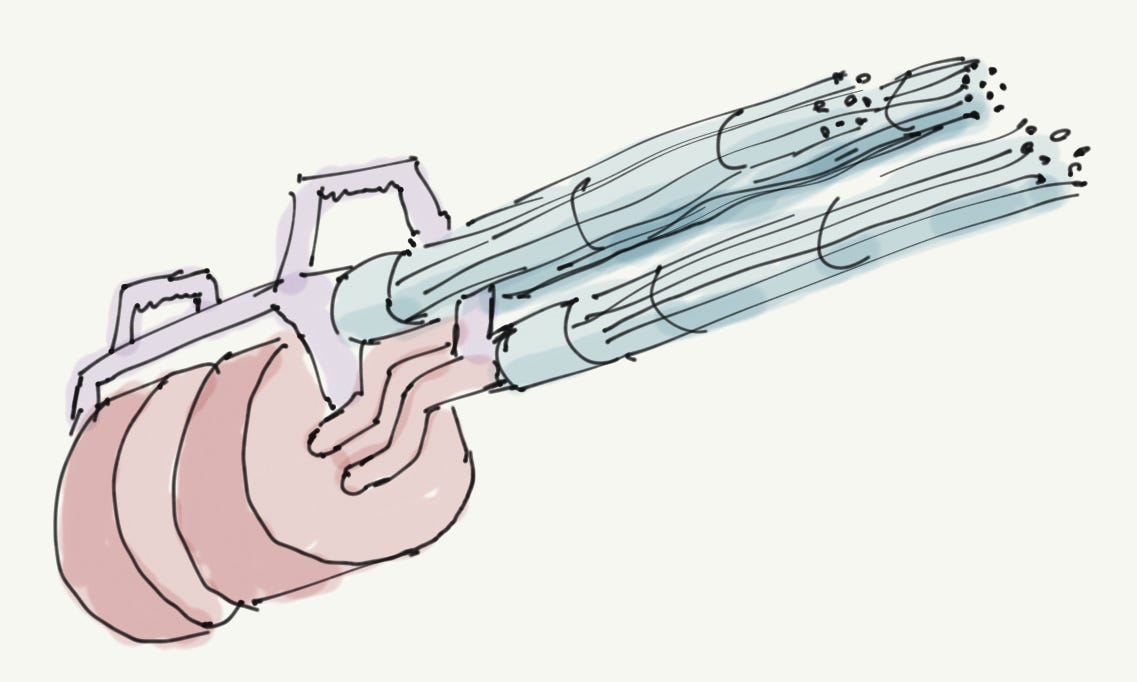Strategy is one of the most powerful tools for change-leadership. Yet it is heavily misunderstood, underutilized, and abused. How can a tool be used properly if it’s not well-understood?
If there was a survey of abused professional words, “strategy” would be right at the top along with “agile”, “AI” and “platform”. It is broadly used as a fancy substitute for goals, visions, decisions, tactics, policies, or even fluffy dreams. In the absence of a formal definition, anything can pass as strategy.
Here’s a brief list of words that are often confused with strategy:
Vision is the long-term future state an organization hopes to achieve. It is a statement of the organization's aspirations and what it hopes to achieve in the long term. The vision is often more focused on the future and provides a sense of direction for the organization's activities.
The mission of an organization is its overall purpose or reason for existence. It is a statement of the organization's values and the impact it hopes to have on the world. The mission is often more focused on the present and provides the framework for the organization's activities and operations.
Goals are specific, measurable targets that an organization aims to achieve in order to fulfill its mission and vision. They are the intermediate steps (usually for 1-5 years)
Objectives are specific, measurable targets that an organization sets in order to achieve its goals (usually for 1-4 quarters). Many companies use OKRs (objectives and key results) with clear metrics that can tell how the objective is doing. Different teams may have different objectives that support one overall goal.
Roadmap outlines the steps an organization will take to achieve its goals and objectives
Plan is a more concrete version of the roadmap with the time and resources
Milestones are key events or achievements that mark significant progress towards the completion of goals or objectives
Policies are fixed guidelines that direct smaller decisions on a day-to-day basis and establish a process
Tactics are concrete actions to fix a problem or achieve a short-term objective (more on this later)
The strategy glossary digs into those definitions with some examples.
At a very high level, strategy is a tool of alignment and change leadership. Usually there are some large and long-term problems without a straightforward path forward due to obstacles.
For a strategy to deliver its full potential, it must meet a certain shape and criteria.
Strategy is a big gun for big problems.
As we will see, it takes a lot of time, research, collaboration thinking and deliberate effort to create an effective strategy. In fact, most things flying in the name of “strategy” don’t pass the mark and inevitably fail.
Why?
The tactical approach is usually considered the opposite the strategic approach:
A tactical approach is reactive toward an immediate problem that’s bleeding. Strategic approach proactively identifies problems to prevent bleeding from happening in the first place.
Tactical is relatively shallow, strategy takes deliberate thought and digs deep into causality and dependencies.
Tactic is concerned with short term objectives; strategy is concerned with making the best choices for the long-term implications.
In panic mode, tactical reactions from different individuals/teams/departments may pull in different directions. Strategic plans align the strength of individuals, teams, and departments to push against the same direction.
The difference is beautifully illustrated by the famous Ants & Grasshopper story. The grasshopper acts tactically, the ant acts strategically.
An organization that primarily runs in tactical mode can show any of these symptoms:
Heroic culture rewarding hard work to save the day
Organizational fatigue and individual burn out
Moody leadership in constant firefighting
Knee jerk overreaction to problems
Politics, lack of transparency and misalignment due to unclear goals
Short sightedness, territorialism, fake deadlines, tech debt, inferior quality, unreliable systems, lack of metrics, poor SLA
…
You get the picture: Tactical, bad. Strategic, good!
Not so fast! 😄 Actually a good strategy aligns tactical actions as steps to reach a higher objective. The problem is when tactical is the only thing that exists and there’s no alignment. Like everything else in life, it’s about striking a balance between pragmatism and proactivity.
What?
Our definition of strategy is based on the top seller book Good Strategy Bad Strategy: The Difference and Why It Matters. In this book, Richard Rumelt identifies 3 key elements as the kernel of a good strategy:
Diagnosis is the result of researching the problem space and identifying the key issues to solve as well as their reasoning. It answers WHY a strategy should exist? What are the symptoms and root causes? How are those root causes validated? And why are those root causes important now? This part is often missing from a bad strategy or at best is limited to an account of the status quo. A good diagnosis requires a detective hat and objective research. It is hard work, but it pays back multifold. To utilize the collective “parallel processing” power of the organization, we first need to be on the same page about WHY.
Guiding policy is the high-level approach to solving the identified and validated problems. The policy makes choices and gives focus to the solution and aligns the organization. It liberates the organization from going back to the drawing board for every single tactical minutia. Bad strategy fails to connect the policy (HOW) to the diagnosis (WHY).
Coherent actions lay a roadmap for implementing the solution in compliance with the guiding policy to tackle the diagnosis. It lists WHAT steps should be taken by WHO and WHEN. The keyword here is “coherent” as in: different teams and individuals take actions that fit together so we can all push in the same direction.
In reality, those three elements don’t get the same amount of attention. Bad strategy is heavy on actions (tactical) while starving the diagnosis.
Keep reading with a 7-day free trial
Subscribe to Alex Ewerlöf Notes to keep reading this post and get 7 days of free access to the full post archives.







